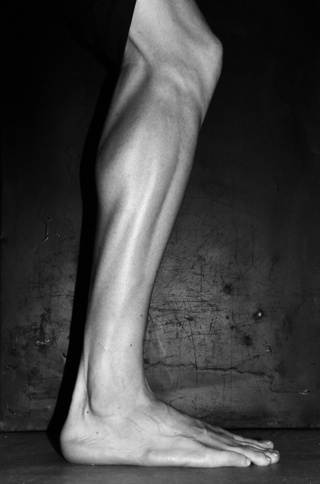
Chatting with physioDave last night helped me decide not to race tomorrow at the Gower Triathlon.
My right calf is getting better, and feeling pretty good after yesterday’s massage, but the flexor hallucis longus muscle really isn’t back to full strength or race fitness. My rule in training if I’m not sure how tired or sore I am is: “get out of the door, then see how you feel”. Racing needs to be different I think. Even if I plan to drop out after the bike if I get myself into a top 3 position on the bike am I still going to pull aside? After putting in a lot of pain and effort I tend to be inclined to see it through to the end. If I do that I’m going to tear up this muscle again, and then I’ll be back to where I was 2 weeks ago, or worse.
PhysioDave points out that a DNS meant you were sensible. A DNF, not so much.
This is only a training race, and my last A race of the season is 8 weeks away. 8 weeks of consistent rehab and running would be really helpful in seeing me meet my goals. Another 3 weeks off running and only 5 weeks of rehab might make my cycling and swimming really good, but I’ll be let down by the third discipline. Blending has been the key to my success this season.
I think I’ll get up early, don my waterproofs, grab my camera and go and cheer on my club mates. And see how the winner does it. I might stick my wetsuit and a towel in the car boot, but no running shoes.
Comments
2 responses to “DNS”
I am a triathlete who has been struggling with a FHL muscle for the past several weeks. Similar history as yours, transitioned to more of a mid-foot strike during the off season. I get to around 13-15 minutes on a run and *wham* my calf knots up. I sm just at the start of my Peak phase, with the USAT AG Nationals in exactly one month I’m wondering how the heck I’m going to be able to run a 10K. So, I have been reviewing your blog posts. Thanks for the info on what treatment has helped, what hasn’t, etc. It’s very helpful for me.
Rest, deep tissue massage from my sports therapist, light stretching (do you know the toes bent up against a step stretch?) and then deeper stretching almost daily for me has allowed the muscle to heal fairly well over 2 weeks. Specific calf and hip flexor stretching work is now in my daily schedule.
Now in the third week I’m doing some light running with walking sections that is softening up the muscle and breaking up some of the collagen (scar tissue) that has formed, and it feels pretty good after 7-8 minutes. I’m looking out for any proper pain that might indicate more damage, and would stop and walk home at that point.
On top of that I’ve started doing some single leg calf raises. I’m doing 3 sets of 10 reps on a step, fairly slowly. The first couple of times the right FHL was painful in the second set, so I stopped. Today the left and right calves both felt pretty similar doing this, which is great!
Next: I’m slowly building up the running with a simple aim of running injury free 3 times a week until Christmas. This means I’ll probably skip hilly races and routes that I think might damage my FHL, but it is probably the simplest way of getting my calves rehabilitated ready for next year. I’m also going to schedule regular 30 minute appointments with my sports therapist for every other week. He literally keeps me running.
With that plan I’m pretty confident I’ll be significantly faster next year!
I hope yours strengthens up too. This seems to be a pretty common thing these days with the big trend in shifting the foot strike off the heels.